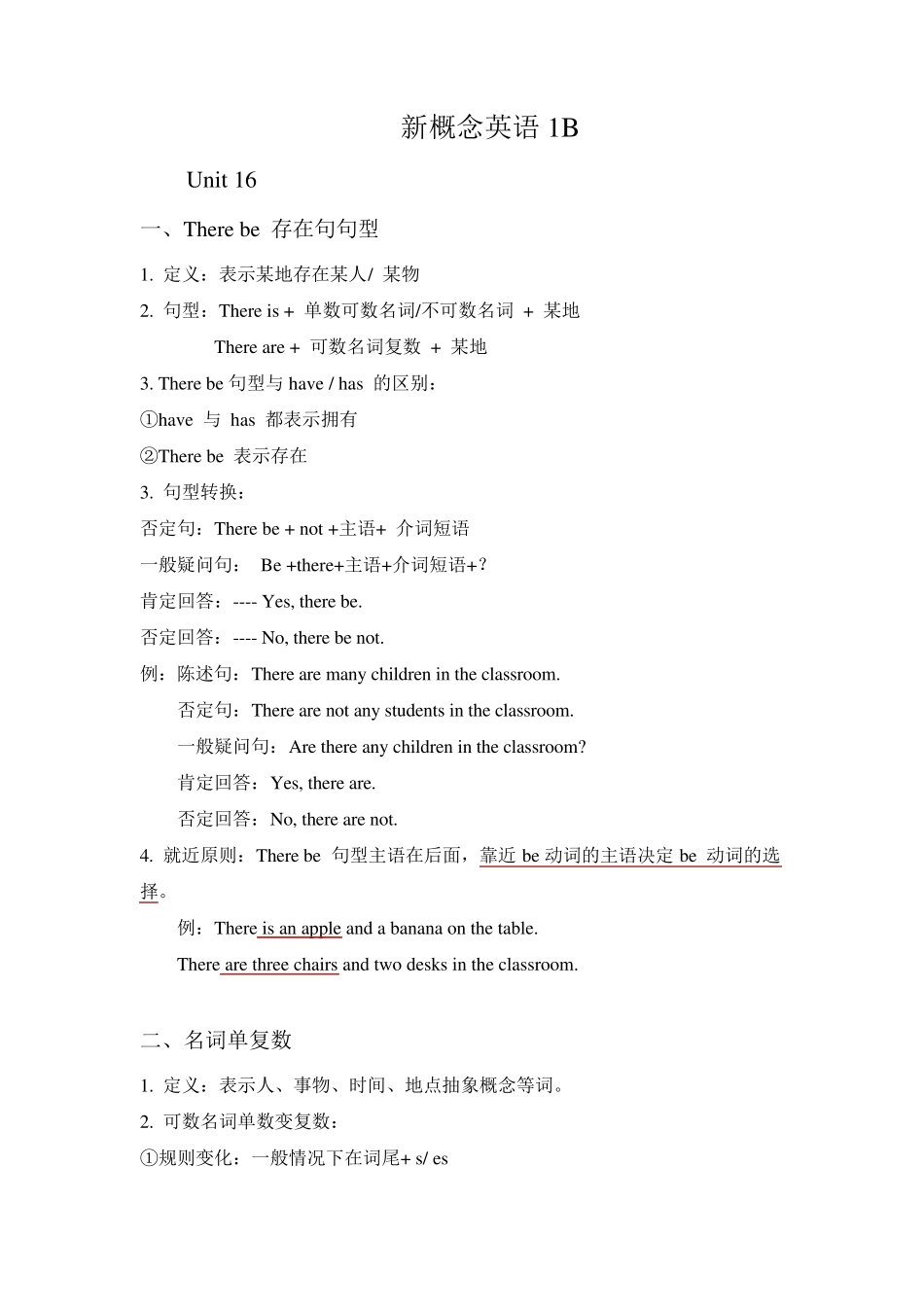新概念英语1B Unit 16 一、There be 存在句句型 1. 定义:表示某地存在某人/ 某物 2. 句型:There is + 单数可数名词/不可数名词 + 某地 There are + 可数名词复数 + 某地 3. There be 句型与have / has 的区别: ①have 与 has 都表示拥有 ②There be 表示存在 3. 句型转换: 否定句:There be + not +主语+ 介词短语 一般疑问句: Be +there+主语+介词短语+? 肯定回答:---- Yes, there be. 否定回答:---- No, there be not. 例:陈述句:There are many children in the classroom. 否定句:There are not any students in the classroom. 一般疑问句:Are there any children in the classroom? 肯定回答:Yes, there are. 否定回答:No, there are not. 4. 就近原则:There be 句型主语在后面,靠近 be 动词的主语决定be 动词的选择。 例:There is an apple and a banana on the table. There are three chairs and two desks in the classroom. 二、名词单复数 1. 定义:表示人、事物、时间、地点抽象概念等词。 2. 可数名词单数变复数: ①规则变化:一般情况下在词尾+ s/ es A: 以s,x,ch,sh 结尾的单词在词尾+ es B: 以辅音字母y结尾的单词,把y 变为i,再加es C: 以f/ fe 结尾的单词,变f / fe 为v,再加es D: 以o 结尾,有生命的单词+ es , 无生命的+ s 注意:以o 结尾,+es 的情况:Negroes and heroes like potatoes and tomatoes. 黑人和英雄喜欢土豆和西红柿。 ②规则变化: A: 内部元音变化:man→men(男人),woman→women(女人),goose→geese(天鹅),tooth→teeth(牙齿),foot→feet(脚) B: 单复同形: sheep(绵羊),fish(鱼),English(英语,英国人),Chinese(中文,中国人),Japanese(日文,日本人) C: 不规则变化:ox→oxen(公牛),child→children(小孩),mouse→mice(老鼠) Unit 17 三、情态动词can 的用法 1. 含义:can 译为“能够,可以,会”。 2. 特点:can 后必须用动词原形 3. 句子结构: ①陈述句:主语+ can + 动词原形+ 其他 ②否定句:主语+ can + not+动词原形+其他 ③一般疑问句:Can + 主语+ 动词原形 + 其他 + ? 肯定回答:Yes, 主语+ can. 否定回答:No, 主语+ can...


